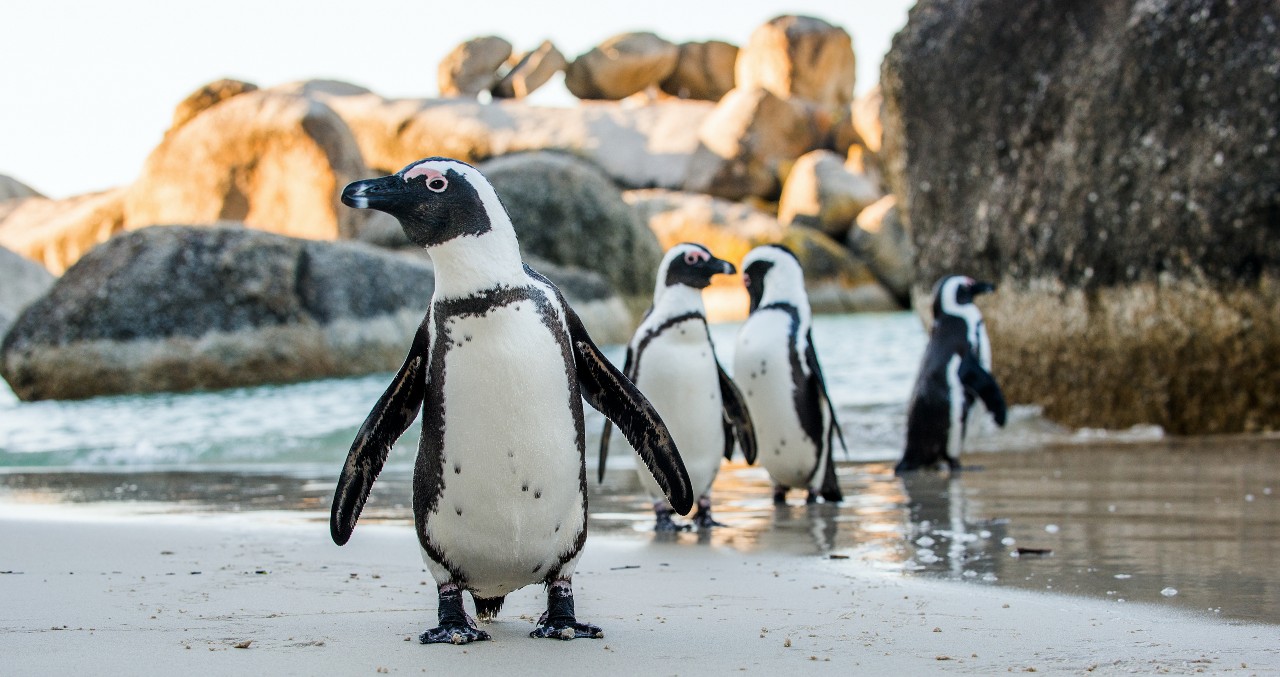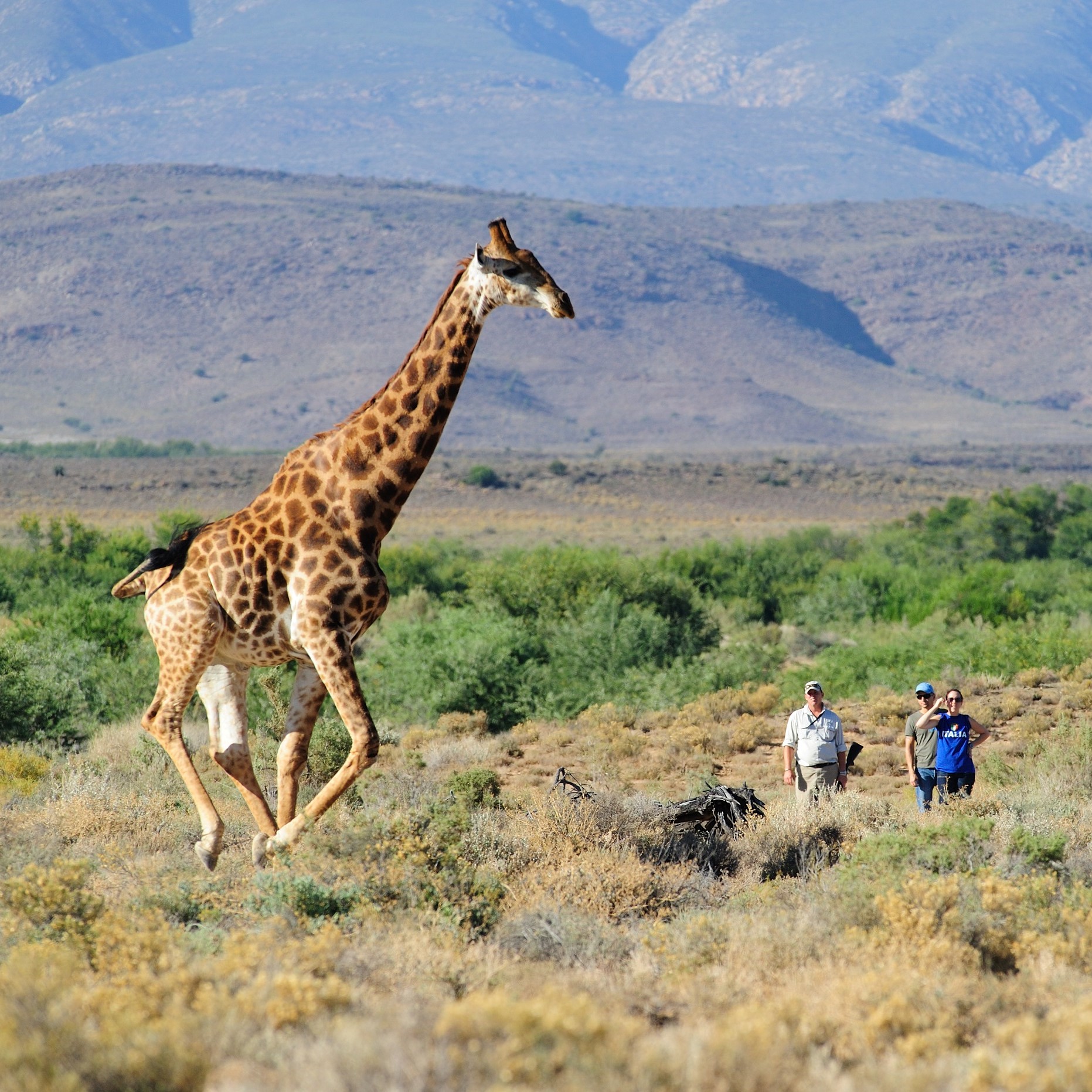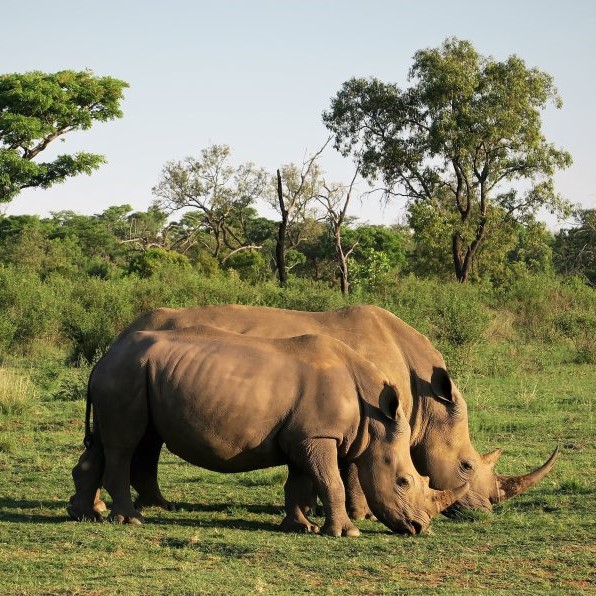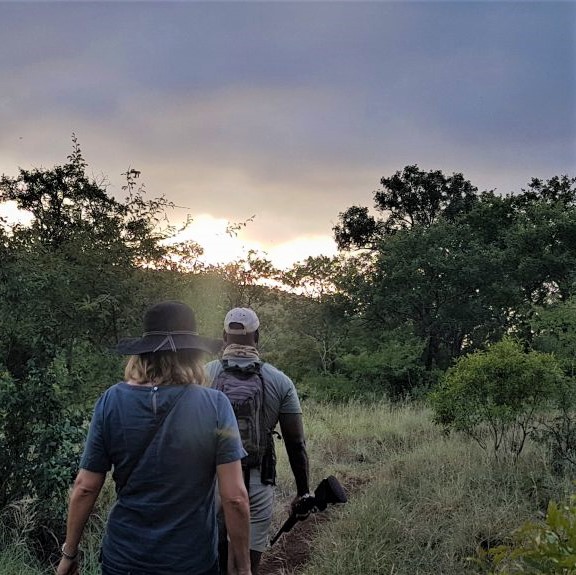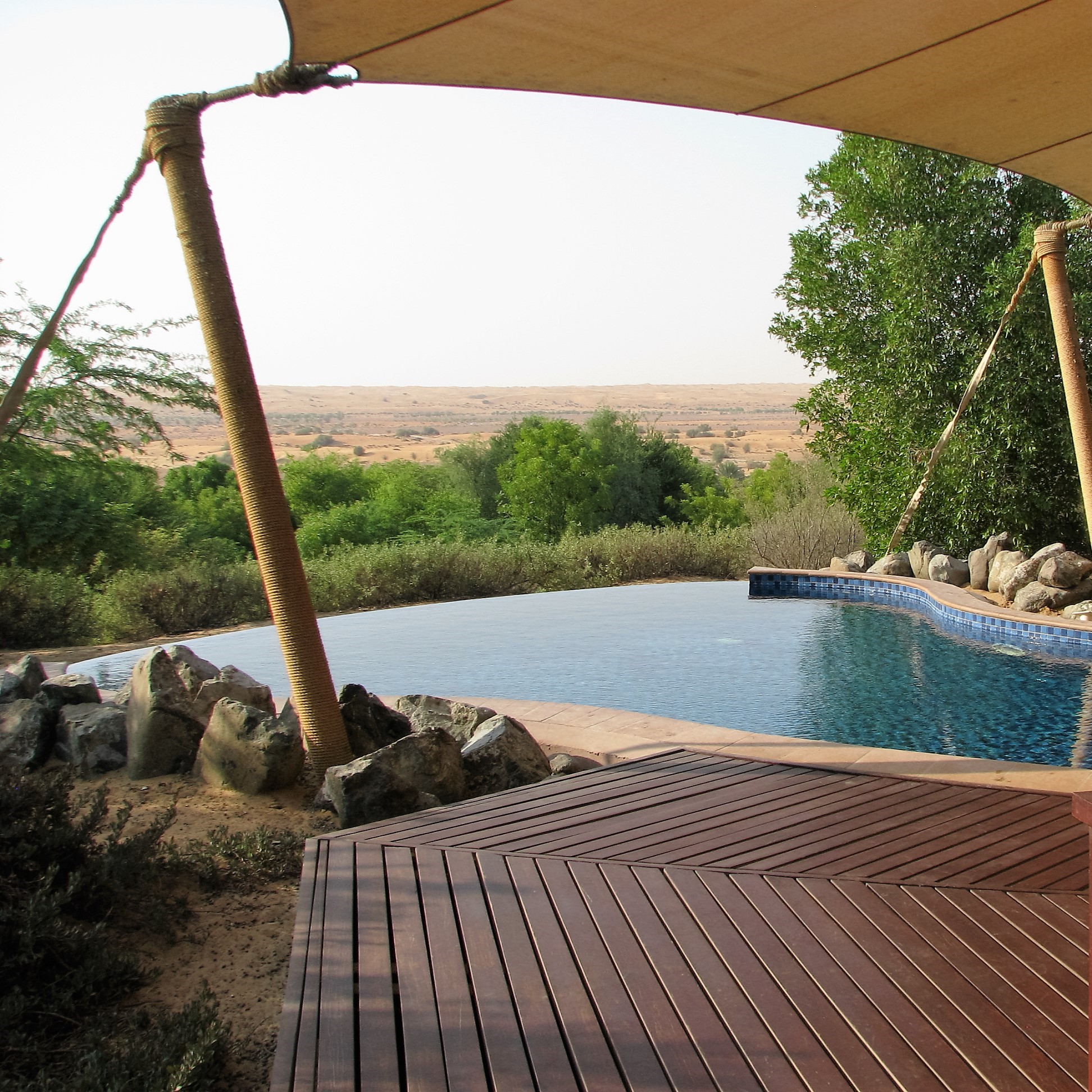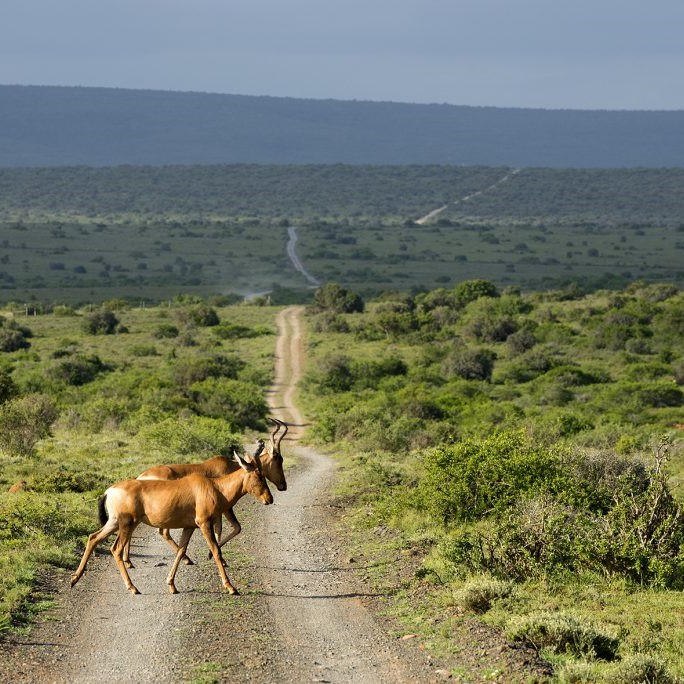Driving through the rolling hills of the Zululand region in KwaZulu-Natal one cannot help but be aware of the challenges rural Zulu communities face and checking in for a luxury safari experience could feel somewhat improper. And it would be if not for the ethos of responsible tourism that underpins every decision the owners of Thanda Safari, Christin and Dan Olofsson and Pierre Delvaux, the CEO of the Thanda Group, make.

From the very beginning, with their significant investment and commitment to creating employment, to their continuous work in the neighbouring communities, the rehabilitation of the land and the many conservation initiatives. Their love for Africa and the Zulu people is even reflected in the name – Thanda, means ‘love’ in isiZulu.
There’s nothing quite like the smell of the African bush, the sounds of unseen creatures and critters and the anticipation of what might be around the next corner. I had the privilege of being ensconced in one of the luxury tents at Thanda Tented Camp… I may have been in a tent, but the only thing close to camping about it was the closeness of the bush around me, the gravel pathways lit by the gentle light from paraffin lanterns and the flickering light of the campfire in the boma.


The other great thing about the Tented Camp is that the camp is off-grid, with solar power and a backup generator – there is even internet connectivity in the central living areas, but ideally one should just ‘switch off’ when in the bush. My tent had a wonderfully spacious bedroom, ensuite canvas bathroom and huge outdoor shower. The private deck overlooking the valley offered the perfect spot to relax, binoculars in hand, watching the birds flitting in the bush and checking the distant hillside for wildlife.

Thanda Safari Private Game Reserve was proclaimed as a protected environment in 2015 and spans 14,000 hectares of bushveld that is home to a wealth of species, including critically endangered rhinoceros and numerous other iconic animals. I met with Lorraine Doyle, Wildlife Manager and Resident Ecologist of Thanda Safari to learn more about Thanda’s commitment to conservation.

Their primary conservation focus she tells me is on conserving wildlife and their habitats, with their wildlife and environmental management team operating around the clock to achieve this. Their responsibilities encompass the overall ecological management of the reserve, combating rhino poaching in the region, and actively participating in range expansion programs for critically endangered species such as white and black rhino as well cheetah. Thanda has a proactive approach to conservation and has formed meaningful partnerships and collaborations with various conservation organizations such as the Endangered Wildlife Trust (EWT) and Project Rhino KZN, of which it is a founding member.
Project Rhino KZN plays a pivotal role in the comprehensive anti-poaching and conservation effort that unites leading conservation agencies, provincial game reserves, government bodies, private game reserves, and anti-poaching security specialists in KwaZulu-Natal. These joint endeavours yield invaluable insights, contributing to the effective protection and management of wildlife within the reserve.

Additionally, Lorraine tells me, Thanda Safari proudly collaborates with the WWF Black Rhino Range Expansion Project (BRREP), an initiative committed to increasing the population of critically endangered black rhinos and expanding the habitat available to them. The project achieves this by fostering partnerships with private landowners and reserves further afield in Africa possessing suitable black rhino habitat. The reserve’s Rhino Monitoring and Anti-Poaching Unit works tirelessly to safeguard these magnificent creatures from the relentless threats of poaching, employing state-of-the-art technology (read about that HERE) and round-the-clock surveillance.
Lorraine tells me that in addition to aiding the surveillance from a security point of view, the collars on the black rhino will help them to manage the population, especially once the entire population is collared.
“It will help us answer questions like: Are there overlaps in territory? Do we maybe have too many black rhino because they’re strictly territorial? Are we going to be heading for conflict in the near future? So, there are lots of management decisions you can make around that information”, states Lorraine. “The data we’re collecting is really valuable and quite fascinating.”
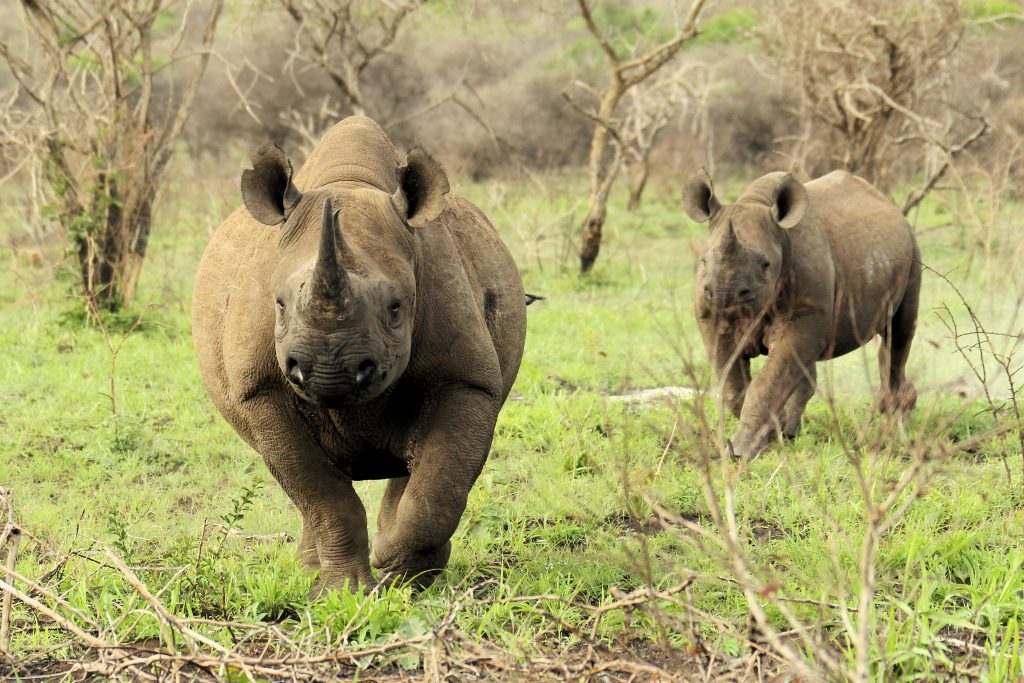
It was this data that revealed the story behind “Grumpy”, a black rhino that was frequently seen around Thanda Safari Lodge. Black rhinos are very territorial, which resulted in a territorial dispute with another male, and him being the older male decided, blow this, I can walk in here and be safe walking between the rooms. Ideal for the rhino perhaps, but not for guest safety.
“We started observing a little more and then we realized that he was going into the lodge quite frequently, mostly at night, which is not ideal with guests walking around. So, we’ve installed a temporary electric fence around the lodge with the plan to relocate him to another reserve because he’s going to keep going back there and it’s not fair to him,” says Lorraine. “We just need to find him a reserve where there’s no other big bulls that are going to push him around.”
Another conservation initiative is Thanda’s collaboration with the Endangered Wildlife Trust’s (EWT) Cheetah Metapopulation Project which is on a mission to create a sustainable and interconnected population of cheetahs across various reserves, thereby establishing the foundation for a successful metapopulation management strategy.

Lorraine tells me that her team has guided the treatment of several cheetahs, including a male with a leg fracture that inhibited -his ability to hunt, and a female who sustained an injury from what appeared to be a hyaena bite. “We put her leg back together again, and now she’s pregnant.” She will give birth in the boma and remain there until the cubs are around 12 weeks old, at which time she and the cubs will be released back into the reserve. This mirrors the time frame in which cubs born in the wild would start to move around with their mother. The special treatment of cheetahs is based on their IUCN ‘Vulnerable’ classification, meaning they face a high risk of extinction in the wild and global population decline.
To get a first-hand experience of these conservation initiatives I head out with assistant head guide Mceleni Ephraim Mathe and tracker Ronnie Nsukwini. We are fortunate to see several white rhino on our game drives through the reserve, as well as a rather skittish black rhino that high-tailed into the thicket when Ephraim stopped the vehicle.
It is at our coffee break that I learn a little more about the game restoration project, and how this previously overgrazed and unproductive farmland and that Thanda has committed to return this land to its wilderness state. Ephraim points out where there were once cotton fields, which one would never guess, save for the occasional remaining cotton plant. No longer overgrazed, the bush and grasslands offer herbivores a veritable feast and during our game drives we see numerous herds of buffalo, plenty impala, zebra, wildebeest and a few giraffes.



Ephraim also tells of the newest section of the reserve – the additional 6,700-hectare Mduna Royal Reserve (land that is held in trust for the Zulu people by the Zulu King), a partnership between the Thanda Foundation, Ingonyama Trust and the Wildlands Conservation Trust.
It seems apt that ‘ingonyama’ means lion in isiZulu, as shortly after our coffee break, we find one of Thanda’s lion prides doing what lions do best, lying around. Their bellies large from devouring their kill from the night before, so it would be a while before they moved. We were fortunate to see them on several of our drives, and on one occasion watched as a young elephant bull mock charged one of the young males, and on another watched a lioness stalk three young kudu males, but without success.


No safari is complete with sundowners in the bush. We head out for our last afternoon drive, I enjoy the sights and sounds of the bush, the warmth of the sun on my body and the general contentment that comes from spending time in nature. And then we spot him, one of Thanda’s male cheetahs… he strides across the plain, pausing only to scent mark a couple of trees before passing beside our vehicle, walking along the road for a short distance and disappearing into the bush.

On-route to what was going to be our sundowner stop we spot a white rhino at one of the waterholes, we watch a while before proceeding. Ronnie sees a herd of buffalo in the distance and makes the call that they would be heading to the waterhole too. Plans adjusted, we too head for the waterhole… there are in fact two white rhino, and before long the herd of buffalo come charging down to the water in a cloud of dust, drinking and submerging themselves with abandon.


We leave them in peace and raise a sundowner G&T toast to Thanda’s successful conservation and habitat restoration initiatives. Back at camp we sit around the flickering light of the campfire under the starlit sky… and just when I think the evening couldn’t get any better, the melodious voices of Zulu women fill the air. The Zulu Mama’s, a choir of mothers from the local community and dressed in traditional wear, perform meaningful traditional songs – one about the threat of poaching to the bhejane, the black rhino, and another about finding a man of character. Subjects we could relate to, something beyond our love of Africa, a humanity that somehow united us in the soft glow of the firelight.
Pics – Thanda Safari (resident photographer and photographic guide Christian Sperka Photography) & Tessa Buhrmann
Read about my experience at Thanda Villa iZulu and a safari experience while there 🙂
Read this article in the digital mag HERE


